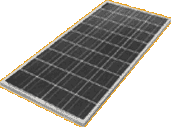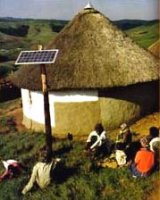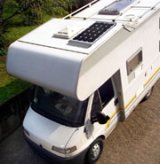Stand-alone photovoltaic systems

The size of an autonomous photovoltaic solar system will be based on the energy needs of the consumer and on the location of the installation.

Its components are:
- Photovoltaic modules: exposed to the sun, they generate electrical energy in the form of direct current and voltage. Their number and relative connections depend on the size of the installation.
- Batteries: the energy provided by the solar modules is accumulated in these. It is necessary to take care to use batteries specifically deigned for pv solar installations, which are different from normal batteries for automobiles. The best batteries are those with positive tubular plates. The choice of type and capacity of the battery (obviously in relation to the type of use) is very important for the longevity of the battery itself, which may last up to 10 years or more.

- Regulator: regulates the charge and discharge of the batteries, which are the most critical elements of the system. It is essentially the "brains" of the installation, which manages the supply from the modules (severing the connection with the modules once the upper limit of battery charge has been reached) and regulates consumer use (severing consumption if the battery voltage goes below a certain minimum level beneath which the accumulator would become damaged).
- Inverter: this is an electric device that transforms the direct voltage and current (as it arrives from the modules and is accumulated in the batteries) to alternating current. In this way the consumer is free to use 220 V devices that are normally used in our living spaces.

